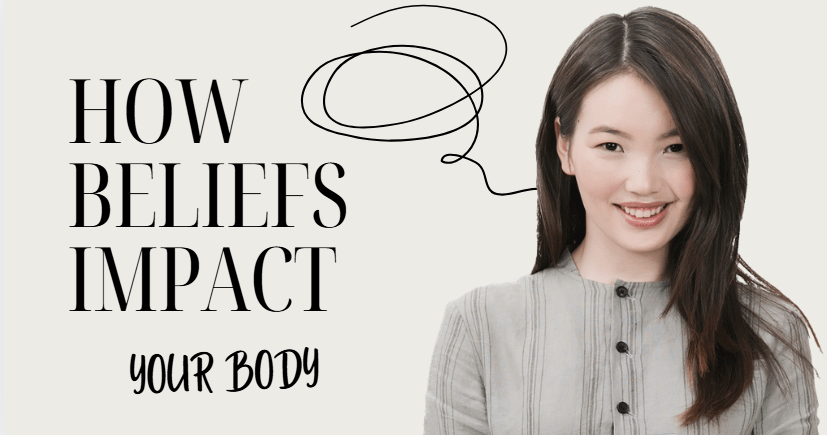
“The Biology of Belief.” These endorsements come from a variety of professionals, including scientists, chiropractors, and authors. The commenters praise the book for its clarity, insights, and potential to revolutionize our understanding of science, consciousness, and healing. Several suggest the book challenges conventional scientific paradigms and offers new perspectives on personal empowerment and creating a better future. Overall, the excerpts frame “The Biology of Belief” as a groundbreaking work that has the power to transform readers’ lives and our collective understanding of reality.
FAQ
- What is the central idea of “The Biology of Belief”?
- The central idea revolves around the concept that our beliefs, whether conscious or subconscious, profoundly influence our biology and genetic expression. It challenges the deterministic view of genes as solely controlling our health and behavior, instead arguing that the environment, particularly our perception of the environment (shaped by our beliefs), plays a dominant role in gene activation and cellular function. In essence, the mind acts as an intermediary between the environment and our genes.
- How do beliefs impact cellular behavior?
- Beliefs influence cellular behavior by altering the chemical signals that cells receive from their environment. The cell membrane acts like a skin, and the receptors act as eyes and ears in that skin and translate the environment into cell behavior. Specifically, the book focuses on the role of membrane receptors, which are proteins that receive environmental signals. These signals trigger a cascade of events inside the cell, leading to changes in protein synthesis, metabolism, and other cellular functions. Positive beliefs can trigger growth and repair, while negative beliefs can trigger protective mechanisms that can be detrimental to health.
- What is the role of the cell membrane in this process?
- The cell membrane, particularly its receptors, acts as the “brain” of the cell. It doesn’t just passively protect the cell; it actively receives and interprets environmental signals, including those influenced by our thoughts and emotions. The receptors on the cell membrane function as antennae, picking up signals from hormones, neurotransmitters, and other molecules. The cell membrane translates these signals into cellular responses, such as growth, repair, or protection.
- How does this perspective challenge traditional genetic determinism?
- Traditional genetic determinism suggests that genes are the primary drivers of our traits and destinies, implying a predetermined path based on our inherited genetic code. “The Biology of Belief” challenges this by asserting that genes are more like blueprints that can be modified and rewritten by environmental influences, particularly by our perceptions of the environment. Genes are not self-actualizing; they need the environment to provide signals to tell them when and how to express themselves. This shifts the focus from genes as controlling our fate to genes as being influenced by our consciousness.
- What is the difference between growth and protection states in cells, and how are they affected by beliefs?
- Cells can exist in either a growth state, focused on nourishing themselves and replicating, or a protection state, aimed at shielding themselves from perceived threats. Positive beliefs, leading to perceptions of safety and abundance, encourage cells to enter a growth state, optimizing health and vitality. Conversely, negative beliefs, associated with fear and scarcity, trigger a protection state, diverting energy from growth and repair to defense mechanisms. Prolonged protection states can lead to chronic stress, weakened immune systems, and increased vulnerability to disease.
- How can individuals consciously influence their beliefs?
- Individuals can consciously influence their beliefs through various techniques, including mindfulness, positive affirmations, cognitive restructuring, and therapies like hypnotherapy and psychotherapy. The key is to identify and challenge limiting or negative beliefs that are unconsciously driving negative outcomes. By consciously replacing these beliefs with empowering and positive ones, individuals can begin to reprogram their subconscious mind and influence their biology in a more favorable direction.
- What are some practical implications of understanding the biology of belief for health and well-being?
- Understanding the biology of belief empowers individuals to take control of their health and well-being. It highlights the importance of cultivating positive thought patterns, managing stress, and creating supportive environments. This knowledge can lead to greater self-awareness, improved self-care practices, and a more proactive approach to health management, including lifestyle choices, relationships, and stress-reduction techniques. It also encourages exploring alternative and complementary therapies that address the mind-body connection.
- Does “The Biology of Belief” discount the role of genetics altogether?
- No, “The Biology of Belief” does not discount the role of genetics entirely. It acknowledges that genes provide a foundation for our biology. However, it emphasizes that genes do not operate in isolation. The environment, and especially our perception of the environment – which can be altered by our beliefs – is what controls which genes are activated or deactivated. It’s not about dismissing genetics, but understanding that gene expression is dynamic and responsive to our beliefs and experiences.
Quiz
- According to Lipton, what is the role of the cell membrane?
- Briefly explain the difference between genetic determinism and environmental influence on cell behavior.
- Describe the process of endocytosis as explained in the text.
- What is the significance of receptor proteins in the cell membrane?
- Explain the difference between growth and protection responses in a cell.
- How do beliefs impact the release of hormones and other regulatory chemicals?
- What is the “placebo effect” and how does it relate to the concepts presented by Lipton?
- Explain how fear can compromise the immune system, according to the book.
- What are subconscious beliefs, and how do they influence our lives?
- According to the book, what are the two major modes of learning to program the subconscious mind?
II. Quiz Answer Key
- The cell membrane acts as the “brain” of the cell, receiving environmental signals and controlling cell behavior based on those signals. It is not just a protective barrier but a dynamic interface.
- Genetic determinism posits that genes predetermine an organism’s traits, while Lipton argues that environmental factors, perceived through the cell membrane, play a critical role in gene expression and cell behavior. In short, we are not simply victims of our genes.
- Endocytosis is the process by which a cell engulfs substances from its external environment. This involves the cell membrane invaginating to form a vesicle around the substance, bringing it into the cell.
- Receptor proteins on the cell membrane act as antennas, detecting specific signals from the environment. These signals trigger a cascade of events within the cell, ultimately influencing gene expression and cellular behavior.
- Growth responses occur when the cell perceives a safe and nurturing environment, promoting cell division and expansion. Protection responses are triggered by perceived threats, diverting energy from growth to defense.
- Beliefs, as perceived by the brain, influence the release of hormones and other regulatory chemicals that travel throughout the body and affect cell behavior. Positive beliefs can promote health, while negative beliefs can contribute to illness.
- The placebo effect is when a treatment with no active medicinal properties improves a patient’s condition simply because the patient believes it will work. This relates to Lipton’s concepts because it shows how beliefs can directly influence the body’s physiology.
- Fear can compromise the immune system by triggering the stress response, which diverts energy away from immune function and towards fight-or-flight responses. Chronic stress and fear can therefore weaken the body’s defenses.
- Subconscious beliefs are deeply ingrained beliefs that operate outside of conscious awareness, shaping our perceptions, behaviors, and reactions without us necessarily knowing. They are often formed early in life.
- According to the book, the two major modes of learning to program the subconscious mind are hypnosis and repetition. Hypnosis involves a heightened state of suggestibility, while repetition involves repeatedly exposing oneself to new beliefs until they become ingrained.
III. Essay Questions
- Explain Lipton’s critique of genetic determinism and how his research on cell biology supports the idea that our environment and beliefs play a more significant role in our health and well-being.
- Discuss the implications of The Biology of Belief for understanding and treating diseases. How might Lipton’s ideas change our approach to healthcare?
- Explain the connection between stress, perception, and health, according to Lipton. How can we use this information to cultivate greater resilience and well-being?
- Compare and contrast Lipton’s perspective on the mind-body connection with more traditional views within Western medicine.
- Analyze the ethical implications of Lipton’s work. If beliefs can influence our biology, what responsibilities do individuals and society have in shaping these beliefs?
IV. Glossary of Key Terms
- Cell Membrane: The outer boundary of a cell that acts as the cell’s “brain”, receiving environmental signals and controlling cell behavior.
- DNA: Deoxyribonucleic acid, the hereditary material in humans and almost all other organisms. It carries genetic instructions.
- Epigenetics: The study of changes in gene expression (active/inactive) that do not involve alterations to the DNA sequence itself.
- Endocytosis: The process by which a cell engulfs substances from its external environment by invaginating the cell membrane to form a vesicle.
- Exocytosis: The process by which a cell releases substances to its external environment by fusing vesicles with the cell membrane.
- Gene Expression: The process by which information encoded in a gene is used to synthesize a functional gene product, such as a protein.
- Genetic Determinism: The belief that genes solely determine an organism’s traits, with little to no influence from the environment.
- Growth Response: A cellular state where resources and energy are directed toward cell division, expansion and overall development.
- Hormones: Chemical messengers produced by the body that travel through the bloodstream to regulate various bodily functions.
- Neuropeptides: Small protein-like molecules used by neurons to communicate with each other.
- Perception: The process of organizing and interpreting sensory information, forming an understanding of the environment.
- Placebo Effect: A beneficial effect produced by a treatment that cannot be attributed to the treatment itself, but rather to the patient’s belief in its efficacy.
- Protection Response: A cellular state where resources and energy are directed toward defense mechanisms in the cell.
- Receptor Proteins: Proteins on the cell membrane that bind to specific molecules, triggering a response inside the cell.
- Subconscious Mind: The part of the mind that contains thoughts and feelings that are not readily accessible to conscious awareness.
- Stress Response: The body’s reaction to a perceived threat, characterized by the release of stress hormones and activation of the sympathetic nervous system.






















0 responses on "Rewire Your DNA: The Science of How Beliefs Impact Your Body"